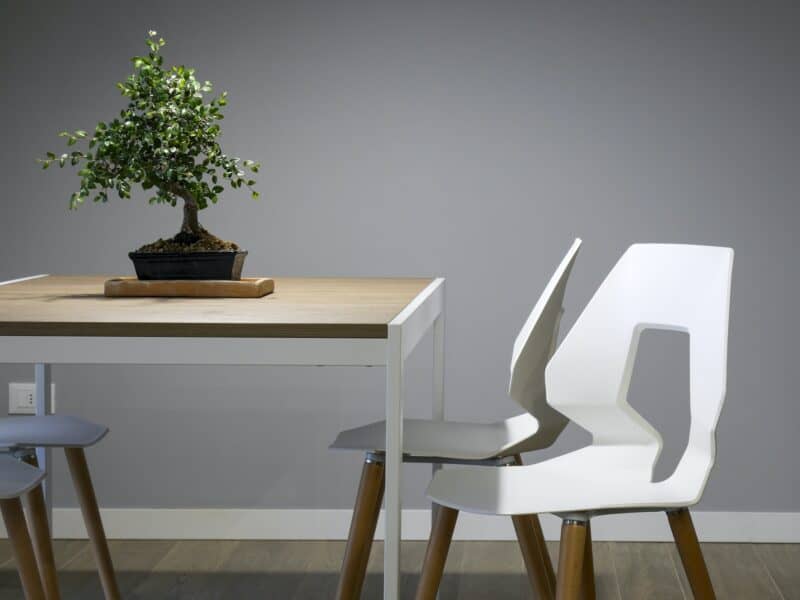Over the past few years, much has been done to remove the amount of Volatile Organic Chemicals (VOCs) used in the manufacture of paint product but many still contain small amounts of these harmful additives.
People naturally worry about the effects on health when using paint in the home. Here are a few questions on the subject…
Mitigating the Effects of High VOC Sealant
Hello I had a question about VOCs in paint. If I use a high VOC plaster sealant but then paint and/ or wallpaper over with low VOC paint will that mitigate the effects of the higher VOC base layer?
Ruth
Answer
Yes, a bit, although the worst period is from application until the surface becomes touch dry. The best thing you can do is to ensure plenty of ventilation for a couple of weeks after painting.
Concerns about painting a toddler’s room
Hi. We have a toddler and need to decorate our entrance hallway, stairs and upstairs landing. Walls to be painted but also a lot of wood and labelling…. questions we have are…is it safe for her to be in the house whilst this is done?
We can take her out for parts of the day but she will need to nap and also sleep at night etc. We will need to use those areas to get upstairs and it’s right outside her bedroom too.
Is it safe? We want a gloss finish but are there any water based paints that give that or only oil which is the more nasty one?
Lastly we need to paint her nursery ceiling. The walls were done previously. Do we need to use special paint or can we use something like the low voc breatheasy type and keep her out of that room for maybe 2/3 weeks?
Thank you so much! Emma
Answer
All domestic paints sold in the EU have to comply with legislation regarding the amount of harmful chemicals (VOCs) so, technically, any paint you’ll use is safe. Much safer than was the case 10 or more years ago, that’s for sure.
The real hazard is to those who use paints daily and the cumulative effect this has on their health.
However, it’s natural for parents to want to do as much as possible to protect kid’s from paint fumes (which all have an element of harm, no matter how technically safe they are supposed to be). So there are some products, commonly labelled as child-safe, which are better in this regard than some others.
There are quite a few water based gloss paints on the market. They are often branded as ‘quick-drying’ and perform quite well although you don’t get such a ‘glossy’ finish. And, although they do dry quickly, they can take a while to fully harden (a couple of weeks, often).
As far as recommendations go I would just say buy the best quality you can afford as there isn’t much to choose between the different brands.
One thing to point out, in respect of preparation, is that if your house is very old there is a possibility that lead based paints may have been used at some time and care needs to be taken when rubbing down woodwork so particles are not released into the atmosphere.
It is many years since lead based paints were banned for domestic use; if your house was built after 1970 it is very unlikely, but worth mentioning. More info here…
Wall and ceiling paint is less of a hazard. Auro Natural is one the best-selling brands of VOC free paint although it is a bit pricey compared to alternative brands. The ‘breatheasy‘ type paints are a fair compromise although not entirely chemical free. Ecosure is the Dulux equivalent which, again, has a low or minimal VOC content but not zero.
Your final comment has hit the nail on the head perfectly though. Ventilation is the key and if you can leave the room unoccupied for a couple of weeks this is about the best thing you can do, no matter what paint you decide to use.
And, sure, keeping your daughter out of the way while the painting is being done would be ideal but possibly not always practical. If you can ensure the house is well ventilated throughout though, all the better.
Comments
Concerned about paint fumes in a care home environment… READ MORE…
I work in a care home , which is constantly being painted using trade paint because it’s hard wearing , but the smell is awful plus the white spirit used and gives me a headache is it safe ?? I’ve complained several times but they think I’m being difficult but we are full of elderly fragile people , are there any guidelines on what can be used? Amanda
Yes, there are guidelines, The Volatile Organic Compounds in Paints, Varnishes and Vehicle Refinishing Products Regulations 2012 [link]
However, most paints used nowadays (trade and diy) will be within the regulated limits. There are a few exceptions but not likely in your situation.
However, to address your immediate concerns, I’m guessing the contractors are using oil-based paints and are, very likely, over-thinning it with white spirit. This is where you may have a reasonable complaint because it’s possible they are doing this beyond the recommended safe levels. Based on past experience, I’d be surprised if this was not the case.
I also wonder why they have not opted to use water-based systems which produce less odour and, generally, have a much lower VOC content? In a care home environment, it would be the logical choice. Water-based paints (once cured) are just as hard-wearing but (here’s the kicker) require more preparation when used over existing oil-based coatings and are more expensive.
By law, the contractors should have completed a COSH (Control of Substances Hazardous to Health) Assessment prior to works commencing and they should be able to produce this on demand. If they are unable to, and/or it doesn’t refer to the points raised above (thinning of paint and/or choice of oil based finishes), then you certainly have a valid basis of complaint to your employer and/or building owner.
I’ve read I can paint my previously varnished internal doors if I use an oil based primer. Which would you recommend, and would the smell be an issue as we have 10 doors to paint in total. READ MORE…
Since you would be covering a large surface area, odour is going to be an issue yes.
You could use a water-based system but it really depends what the doors were finished with before and whether any stain will bleed through.
Definitely worth trying a sample of a quick drying, water-based primer such as Zinsser Bulls Eye 123 (available from amazon.co.uk).
Plenty of water-based options for the finishing coats too.
If you do have a problem with stain bleeding through or any discoloration, you will have to use an oil based primer but you can still use a water-based system for the finishing coats.
My husband recently painted our outdoor deck in a high VOC paint. We have recently found out that I am pregnant and now he wants to take the whole decking out in case it’s toxic. Will it be ok now that it’s dried or does it still pose a risk? READ MORE…
The risk to health from paints with a high VOC content is reasonably negligable for a domestic user. The real risk is for someone who is using these paints day in, day out as part of their job.
However, it makes good sense to reduce your exposure wherever possible. The time of actual painting and for a few days afterwards is when the hazard is greatest. After this period, and especially out of doors, there is almost no hazard at all.
Most paints take a couple of weeks to fully cure so, by all means, avoid this area for the time being but don’t go to the extreme of removing the decking altogether.
The dust and debris from such an operation would likely cause far more localised air pollution anyway.


